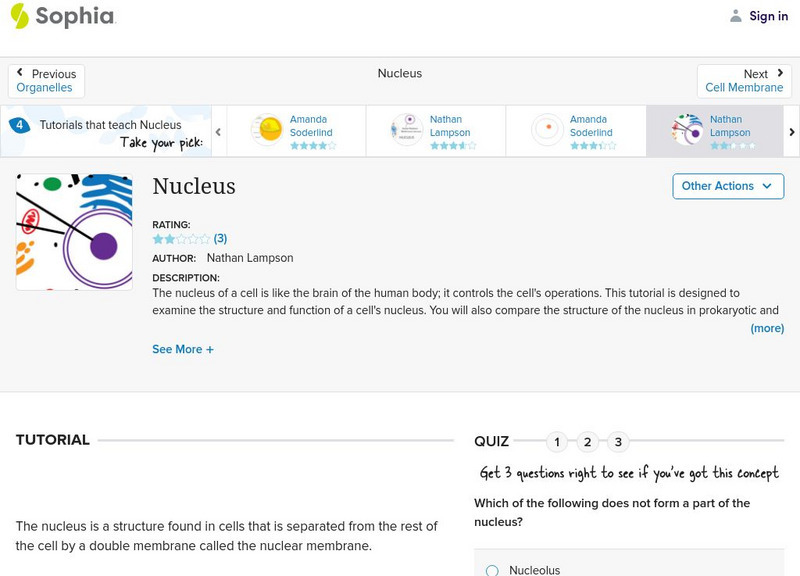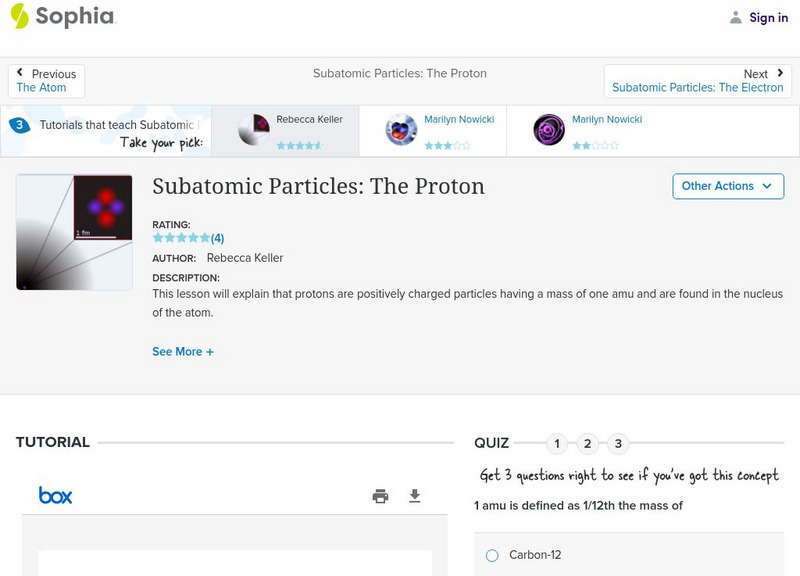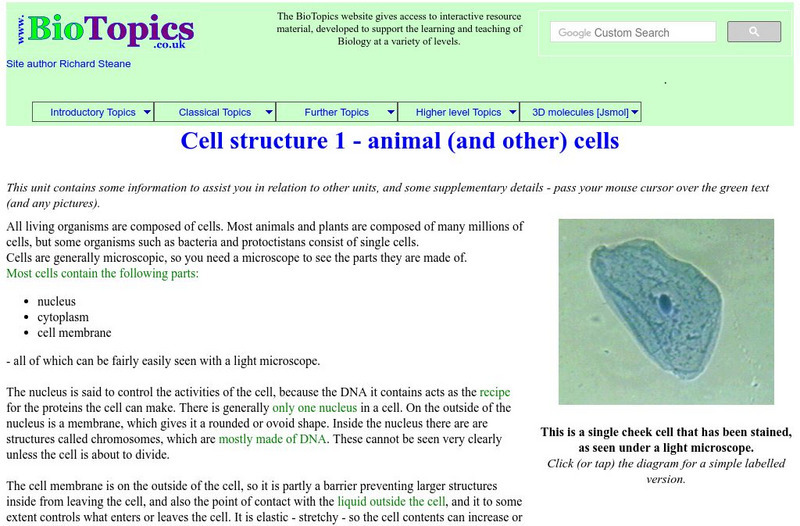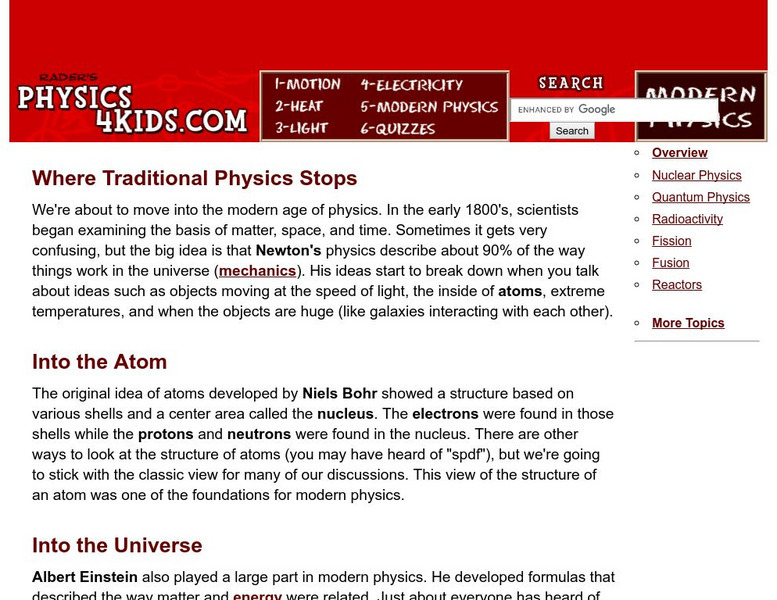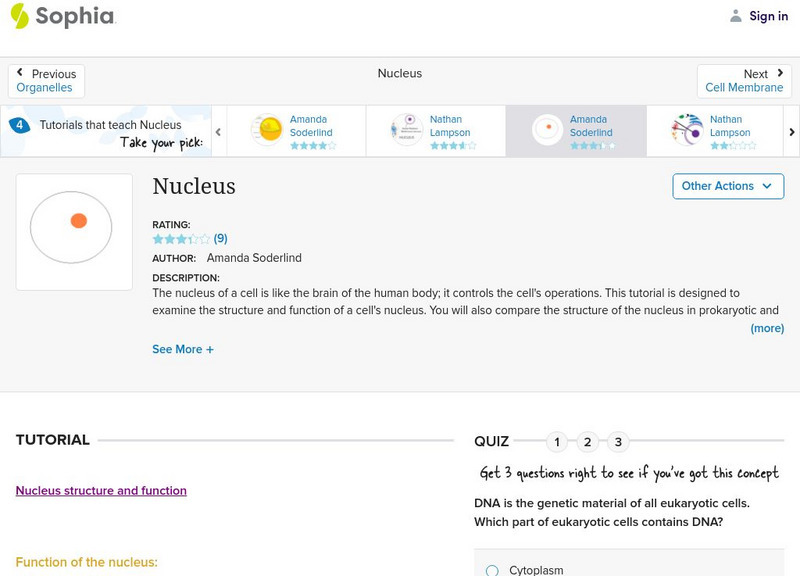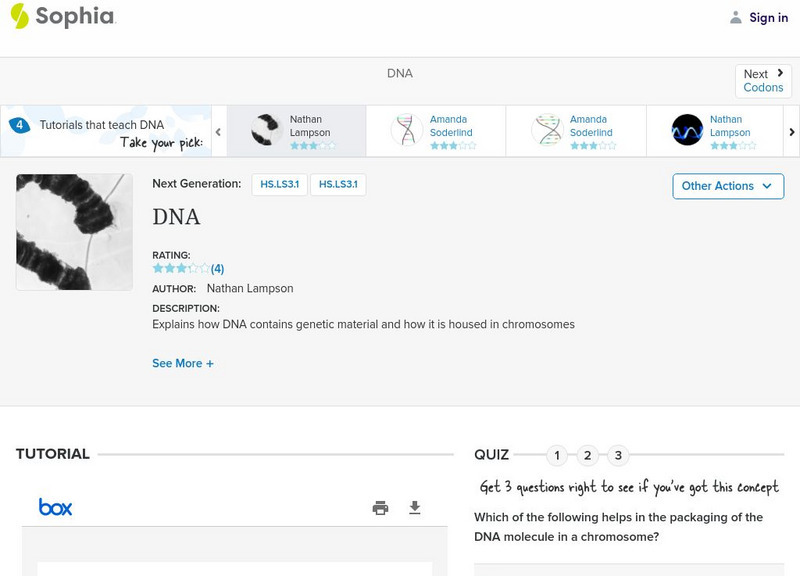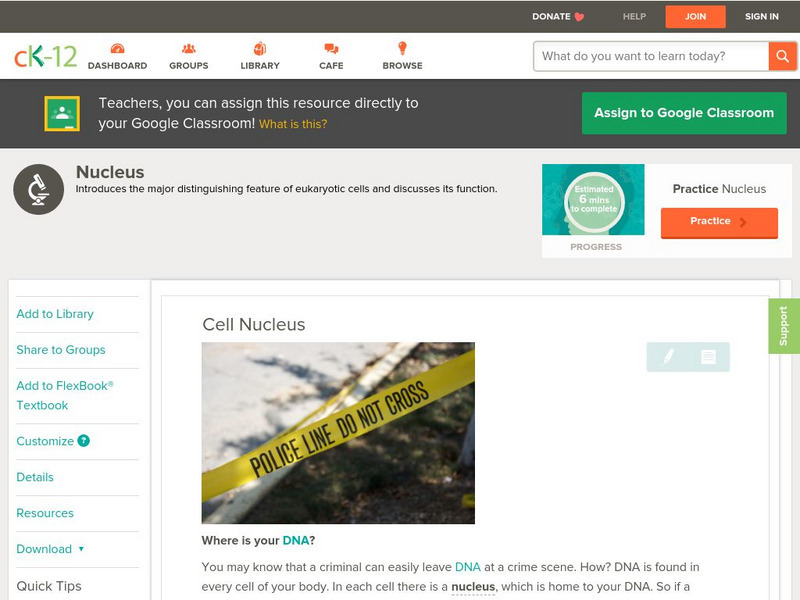Hi, what do you want to do?
Simon Fraser University
Chem1 Virtual Textbook: Electrons
Acting as part of an overview on quantum theory, this section of the site deals with questions related to electrons, such as "If the electron cannot be localized, can it be moving?" and "Why does the electron not fall into the nucleus?"
Ministerio de Educación (Spain)
Ministerio De Educacion: El Nucleo Atomico
Read about the nucleus and its properties. These pages have a lot of illustrations.
Thomas Jefferson National Accelerator Facility
Jefferson Lab: Beta Decay
This site from Jefferson Lab provides a description of beta decay along with two helpful formula examples. Several links are provided throughout this page for additional information on related subjects.
My Science Site
Neuroscience for Kids: Types of Neurons (Nerve Cells) [Pdf]
Site delves into what neurons are and what they do. Also contains colorful illustrations of neurons.
Cells Alive
Cells Alive:organelle Crossword #2
A crossword to help review the terms and definitions associated with organelles.
New York University
New York University: Law of Conservation of Energy
Site presents a straightforward presentation of Rutherford's work concerning the Law of Energy Conservation. Provides an adequate summary of early science on the nucleus, and includes much needed illustrations.
Sophia Learning
Sophia: Dna: Lesson 2
Explains how DNA contains genetic material and how it is housed in chromosomes. This lesson is 2 of 5 in the series titled "DNA."
Sophia Learning
Sophia: Dna: Lesson 1
Explains how DNA contains genetic material and how it is housed in chromosomes. This lesson is 1 of 5 in the series titled "DNA."
Sophia Learning
Sophia: Eukaryotic vs. Prokaryotic Cells: Lesson 1
This lesson explains the difference between Eukaryotic and Prokaryotic cells. It is 1 of 4 in the series titled "Eukaryotic vs. Prokaryotic Cells."
Sophia Learning
Sophia: James Chadwick
This lesson explains the discovery of the neutron and Chadwick's experimental process.
Sophia Learning
Sophia: Nucleus: Lesson 3
This lesson will discuss the structure and function of the nucleus. It is 3 of 5 in the series titled "Nucleus."
Sophia Learning
Sophia: Subatomic Particles: The Electron: Lesson 3
This lesson will explain that electrons are negatively charged particles with negligible mass and are found in pairs in orbitals surrounding the nucleus of an atom. It is 3 of 3 in the series titled "Subatomic Particles: The Electron."
Sophia Learning
Sophia: Subatomic Particles: The Proton: Lesson 2
This lesson will explain that protons are positively charged particles having a mass of one amu and are found in the nucleus of the atom. It is 2 of 3 in the series titled "Subatomic Particles: The Proton."
Sophia Learning
Sophia: The Atom: Lesson 2
This lesson will illustrate that an atom is mostly empty space and has a positively charged, massive core (containing both protons and neutrons called the nucleus) surrounded by negatively charged electrons. It is 2 of 3 in the series...
Bio Topics
Bio Topics: Cell Structure
A reference site exploring cell structure. Learn about the structures and functions of the major organelles of the cell. Also included are research questions to better understand the cell.
Bio Topics
Bio Topics: Cell Structure
An online worksheet exploring the cell structure and cell specialization. Worksheet includes diagramming and fill in the blank opportunities related to cell structure.
Physics4kids
Physics 4 Kids: Where Traditional Physics Stops
We're about to move into the modern age of physics. In the early 1800's, scientists began examining the basis of matter, space, and time. Sometimes it gets very confusing, but the big idea is that Newton's physics describe about 90% of...
Sophia Learning
Sophia: Nucleus: Lesson 2
This lesson will discuss the structure and function of the nucleus. It is 2 of 5 in the series titled "Nucleus."
Sophia Learning
Sophia: Subatomic Particles: The Neutron: Lesson 2
This lesson will explain that neutrons are particles in the nucleus that have no charge and a mass of one amu. It is 2 of 3 in the series titled "Subatomic Particles: The Neutron."
Sophia Learning
Sophia: Dna: Lesson 4
Explains how DNA contains genetic material and how it is housed in chromosomes. This lesson is 4 of 5 in the series titled "DNA."
CK-12 Foundation
Ck 12: Life Science: Cell Nucleus
[Free Registration/Login may be required to access all resource tools.] The nucleus is only found in eukaryotic cells. It contains most of the genetic material of the cell. It is surrounded by a double membrane, or nuclear envelope, that...
Sophia Learning
Sophia: Nucleus
Learn the basic structure and function of the nucleus, or the control center of a eukaryotic cell.
Simon Fraser University
Chem1 Virtual Textbook: Movement of the Electron
Acting as a subtopic of the General Chemistry Virtual Textbook's section on Atoms and the Periodic Table, this site seeks to answer the question, "Why doesn't the electron fall into the nucleus?"
Ducksters
Ducksters: Biology for Kids: Cell Nucleus
Explore the cell nucleus in the science of biology on this site. Learn how this organelle is the control center of the cell, storing the DNA and hereditary information inside chromosomes.








![Neuroscience for Kids: Types of Neurons (Nerve Cells) [Pdf] Handout Neuroscience for Kids: Types of Neurons (Nerve Cells) [Pdf] Handout](https://static.lp.lexp.cloud/images/attachment_defaults/resource/large/FPO-knovation.png)





